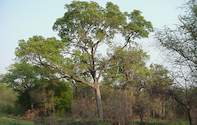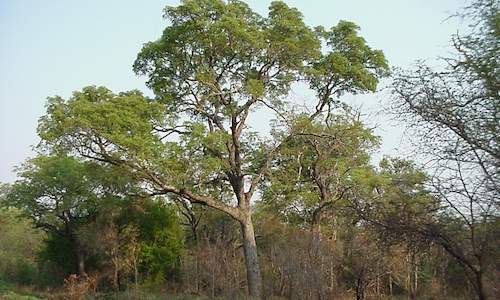
At what rate do trees really grow? This is a question that has puzzled scientists and botanists over the years. As trees are a primary food source for many animals and play a vital role in all savanna ecosystems, finding out how fast or slow they grow will help ecologists unravel some of the mysteries of how trees establish themselves in the landscape.
Dr Holger Eckhardt (pictured below), Sanparks plant ecologist from scientific services, based in Skukuza, is involved with a research project that is looking at this very question. Dr Ed Stam from the Cape Peninsula University of Technology (CPUT) is leading the project, which is focussed on monitoring the rate at which marula trees grow by measuring changes in the stem or trunk circumference.
To do this, a special, USA-designed dendroband is fitted around the trunk of randomly selected marula trees over a certain height. These trees have been selected from within the Nkhulu Exclosure, along the Sabie River, and the Buffalo Camp near Satara.
These trees are protected within the exclosure from damage from herbivores such as elephants, who are known to have a taste for marula trees. The dendrobands are designed to measure the increase and/ or decrease of the stem circumference as, surprisingly, trees can also shrink due to water stress or when under severe drought conditions.
In each exclosure, there are 10 dendrobands fitted to tall marula trees that are in different positions in the landscape. Originally there were only nine dendrobands fitted in the Nkhulu Exclosure and the combined task recently undertaken by Holger was to fit the 10th dendroband to a selected tree and also to take growth measurements of the other trees already fitted with dendrobands.
Holger measured all the study trees in both exclosures, which he located using the GPS co-ordinates which are recorded for each tree, and re-set the dendrobands. These dendrobands were fitted in June 2006 and the measurements are taken every six months.
The information collected from these valuable dendrobands will form part of the long-term monitoring strategy linked to the experimental design of these exclosures. Nature works on different timescales to people and often it is worth the long wait and repeated monitoring to get valuable information on how the ecological processes in our savannas work.
By Sarah Webb and Michele Hofmeyr

 The history of the marula tree goes back thousands of years. Archaeological evidence shows the marula tree was a source of nutrition as long...
The history of the marula tree goes back thousands of years. Archaeological evidence shows the marula tree was a source of nutrition as long...